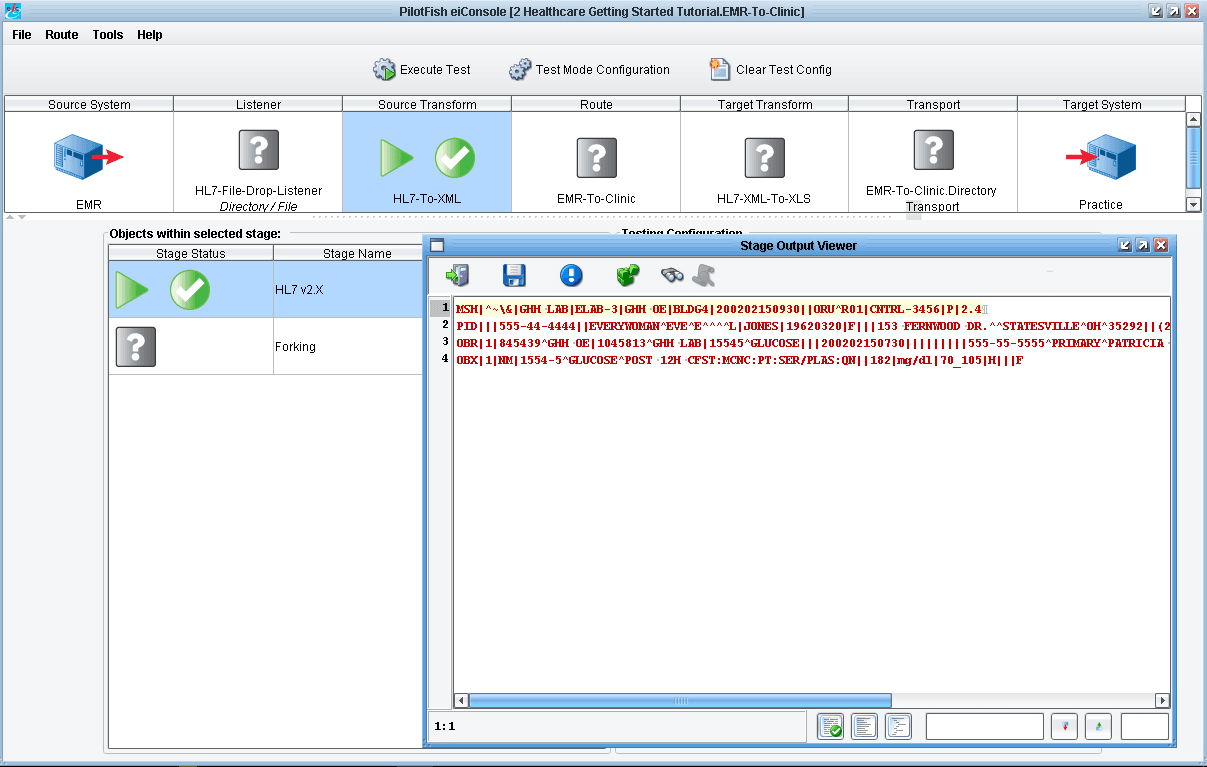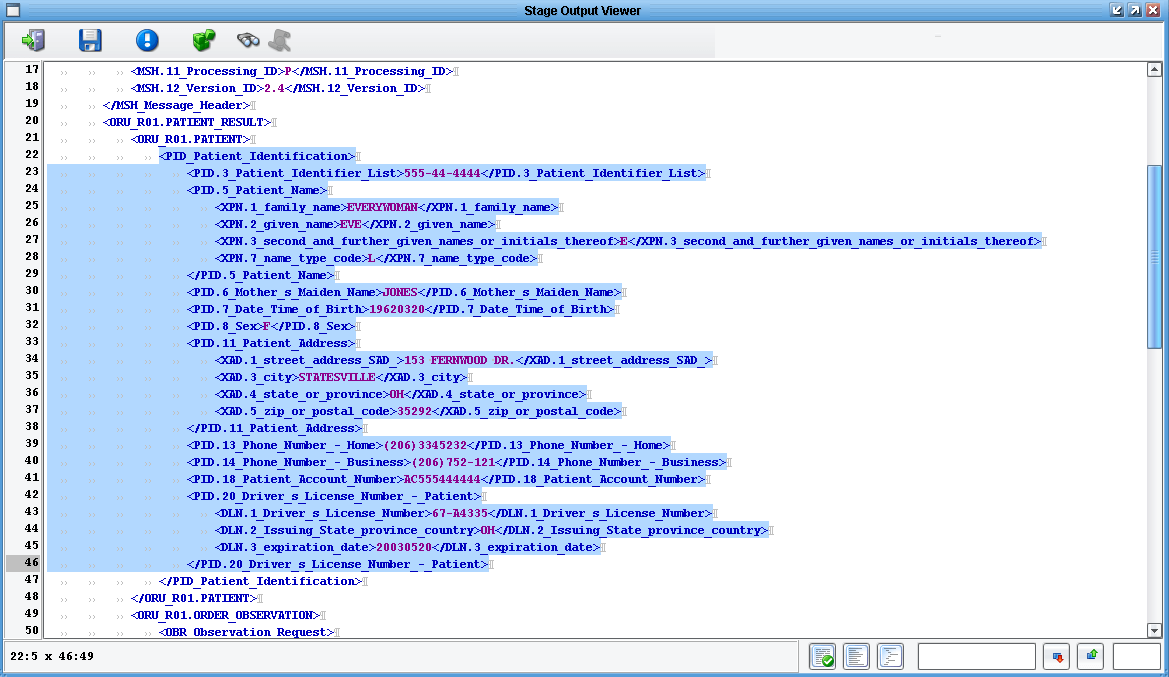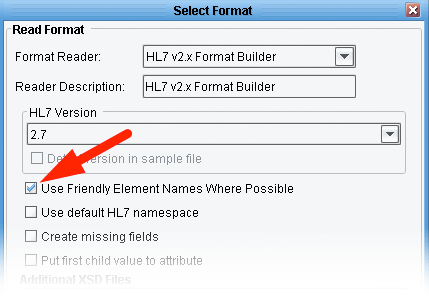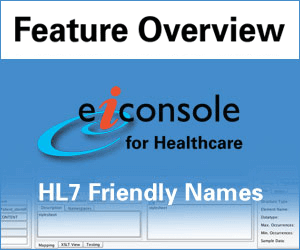Replace Cryptic HL7 Names with Understandable Synonyms and Accelerate Cost Savings
Cryptic Message, Segment, Component, and Field names comprising HL7 v2 messages require expert-level knowledge to decipher on the fly. Hardly a common skill! With PilotFish’s HL7 Interface Engine’s Friendly Names option, mapping and manipulating HL7 2.x messages is far easier and faster for both developers and business users. With Friendly Names, you save hundreds (if not thousands) of hours of user effort, at any skill level now spent in deciphering and dealing with HL7 v2. That translates into cost savings and greater ROI.
Healthcare’s HL7 Version 2.x (V2) is the workhorse of electronic data exchange and is currently its most widely implemented messaging standard. The Friendly Name feature of PilotFish’s eiConsole Healthcare Interface Engine IDE allows users to bind HL7 messages to or from human-readable XML. The eiConsole’s parsing and binding functionality optionally replace cryptic HL7 names with simple, understandable synonyms derived from field descriptions in the appropriate version of the HL7 vocabulary.
PilotFish’s HL7 Friendly Names Avoids the Speed Bumps in HL7 V2 Data Transformations & Mappings
Enabling PilotFish’s HL7 Friendly Names option obviates the time-consuming process of going back and forth between code and a vocabulary lookup tool, tasks common in going to or from all the versions of HL7 v2.x now in use.
A little background will highlight why PilotFish’s HL7 Friendly Names option so significantly speeds up working with HL7 2.x. An HL7 message is a hierarchical structure associated with a trigger event, e.g., a lab result, admission, etc. In the v2.x format, the message is a collection of concatenated segments, each terminated by a carriage return. HL7 messages typically contain a large number of data segments.
The segments each can contain large numbers of individual fields. Depending on the type of the field, each field can have multiple optional repetitions (separated by ~ by default), can be made out of multiple components (separated by ^ by default) where each of them can also have subcomponents (separated by & by default). The abstraction of HL7 v2.x coding has the desired advantage of resulting in quite small messages. However, such abstraction ends up being cryptic to less than expert users – and even expert users.
This disadvantage is costly as organizations look to free up scarce developer time by using business analysts and other professionals for interface configuration.
The truncated HL7 2 lab result example here shows the difficulty that deciphering HL7 2.x messages presents to users.

Click to Enlarge Sample HL7 2.X Message
Simple, understandable synonyms derived from field descriptions in the appropriate version of the HL7 vocabulary support non-programmers in being able to do 80-90% of the interface work. Invoking the Friendly Names option helps users quickly, and easily, understand HL7 2.x standard messaging data and work with it. Using human-readable XML to transform highly structured, cryptic HL7 2.x data allows it to be more efficiently mapped and exchanged.

Click to Enlarge XML Friendly Names Representation of HL7 2.x Data
To enable the Friendly Names option when transforming or mapping data, users simply check a “Use Friendly Names…” box.

Select “Use Friendly Names…” and Save Time by Not Having to Decipher Cryptic HL7 Messages
When used in conjunction with the eiConsole IDE Data Mapper, users can create drag & drop data mappings using only the “friendly” versions of the HL7 field names.
Focus on Mapping, Logic, and Interfaces – No More Tediously Keeping Track of Field Names and Definitions
In combination with the ability to browse the in-line vocabulary and code table reference that PilotFish provides, our Friendly Name feature allows users to focus on logically mapping their data – and not waste time keeping track of what a field is or how it is defined.

2 Minute HL7 Friendly Names Video Demo
Leverage Our Expertise with 23+ Years of Dealing with HL7 2.x Every Day
As the complexity of HL7 v.2x data and implementations continues to grow, so will your integration challenges. With PilotFish, users not need be expert in HL7 v2, HL7 v3, FHIR, XML or any other data sources present in HL7 Interfacing.
PilotFish’s HL7 Interface Engine’s architecture, automation, time-saving options and smart widgets make configurations easier and faster than you ever thought possible. We invite you to see how Friendly Names and our other innovations translate into cost-savings and higher ROI.
The eiConsole for Healthcare Interface Engine IDE and the Friendly Names component are part of the PilotFish Interface Development Life Cycle – a complete system for building, maintaining, testing and deploying interfaces.
Learn more about the eiConsole for Healthcare’s HL7 Features.
Download a FREE 90-Day Trial of PilotFish’s Integration Engine – eiConsole or contact us for a custom demo.
If you’re curious about the software features, free trial, or even a demo – we’re ready to answer any and all questions. Please call 813 864 8662 or click the button.
HL7 is the registered trademark of Health Level Seven International. (The HL7 Datatypes are documented in Chapter 2 of the HL7 International standard. Encoding using Components and Subcomponents is also documented.)

